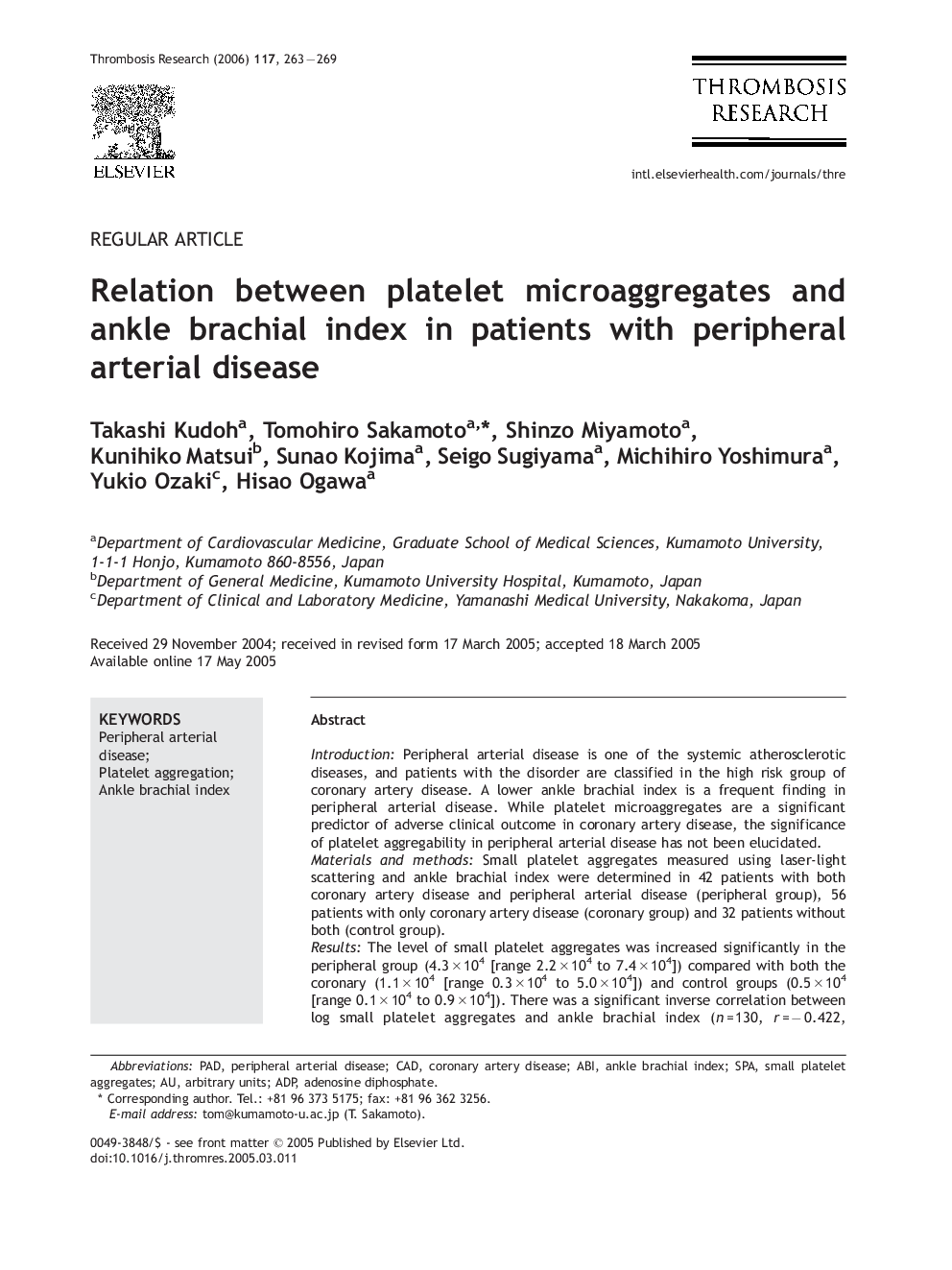| کد مقاله | کد نشریه | سال انتشار | مقاله انگلیسی | نسخه تمام متن |
|---|---|---|---|---|
| 3030379 | 1183202 | 2006 | 7 صفحه PDF | دانلود رایگان |

IntroductionPeripheral arterial disease is one of the systemic atherosclerotic diseases, and patients with the disorder are classified in the high risk group of coronary artery disease. A lower ankle brachial index is a frequent finding in peripheral arterial disease. While platelet microaggregates are a significant predictor of adverse clinical outcome in coronary artery disease, the significance of platelet aggregability in peripheral arterial disease has not been elucidated.Materials and methodsSmall platelet aggregates measured using laser-light scattering and ankle brachial index were determined in 42 patients with both coronary artery disease and peripheral arterial disease (peripheral group), 56 patients with only coronary artery disease (coronary group) and 32 patients without both (control group).ResultsThe level of small platelet aggregates was increased significantly in the peripheral group (4.3 × 104 [range 2.2 × 104 to 7.4 × 104]) compared with both the coronary (1.1 × 104 [range 0.3 × 104 to 5.0 × 104]) and control groups (0.5 × 104 [range 0.1 × 104 to 0.9 × 104]). There was a significant inverse correlation between log small platelet aggregates and ankle brachial index (n = 130, r = − 0.422, p < 0.001). Multivariate logistic regression analysis revealed that a lower ankle brachial index (< 0.90) was an independent determinant of increased levels of small platelet aggregates.ConclusionsPlatelet aggregability was increased in patients with peripheral arterial disease with the degree of platelet aggregation being closely associated with ankle brachial index. It is possible that this change in platelet activity may be one mechanism to explain why a lower ankle brachial index is a predictor of poor prognosis in patients with peripheral arterial disease.
Journal: Thrombosis Research - Volume 117, Issue 3, 2006, Pages 263–269